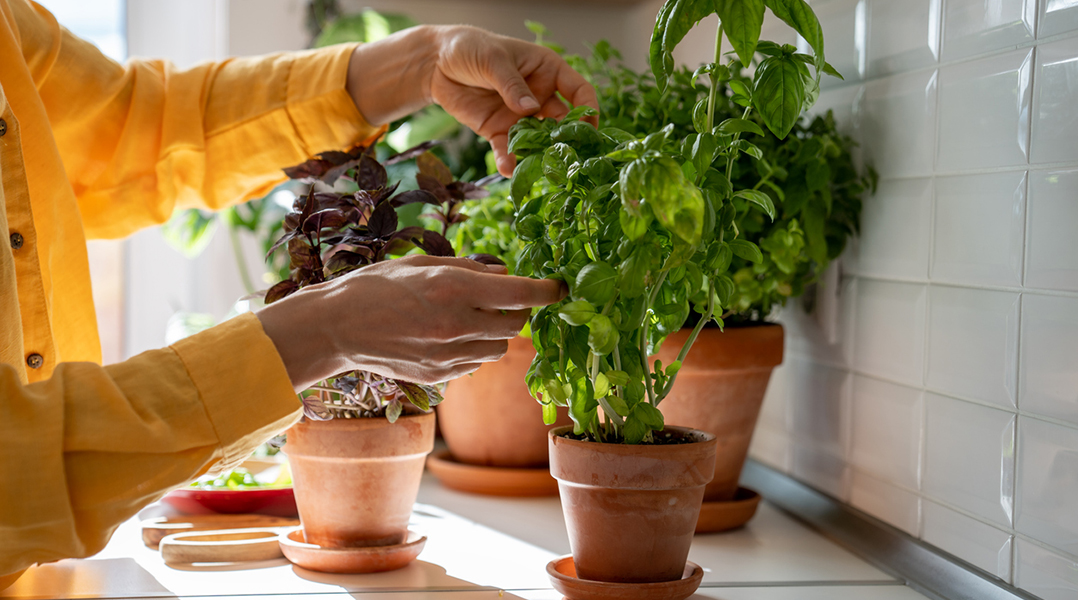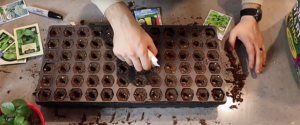Basil

Health Power
Basil known for flavonoids (protect DNA, which creates and regulates cells) and volatile oils (antibacterial action). Some oils even halt growth of drug-resistant bacteria. Volatile oil eugenol may reduce inflammation and pain, such as in arthritis.
Vitamin and Mineral Content
Vitamins – K, A and C
Minerals – Iron, Calcium, Manganese, Magnesium and Potassium
Disease Prevention
Basil contains strong antioxidant beta-carotene. Prevents unstable molecules (free radicals) from damaging epithelial cells including blood vessel walls. Beta-carotene helps prevent plaque build up (atherosclerosis) in arterial walls by blocking oxidation of LDL cholesterol. Lowers risk of heart attack and stroke. Contributes to the prevention of asthma, rheumatoid and osteoarthritis.
How to Grow
Grow as an annual where winter snow or frost are common; a perennial in warm, Southern regions. Two types: sweet and bush. Sweet is taller (1.5-2 feet high, more productive, better flavor). Sweet basil grows best in sunny, protected area with healthy soil. Sow seeds in early spring in smaller containers indoors. Prepare soil by working in aged compost, manure or planting mix with plenty of organic matter. Transplant outdoors about one foot apart after last frost. Keep soil moist; water thoroughly during hot, dry weather. Remove flower buds when they appear to stimulate more growth. Harvest younger leaves through summer in quantities needed for cooking. Also dry and put in airtight containers or freeze for later use.
Insect Control
Minor pest problems. Prevent Japanese beetles from eating foliage by hand picking.
Tips
Save seeds for next year by harvesting stems after seeds ripen. Hang upside down in a closed area. Set cloth underneath to catch seeds as plant dries up and releases them.
___________________________________________________________________________________
What do you need to start indoor growing?
It’s easy to buy your transplants from the garden center each season, but there are lots of reasons to sprout your own seeds at home. It will save a substantial amount of money, you’ll have access to a wider range of plant varieties, and you’ll have the satisfaction of seeing a plant through its full life cycle. But if you’re a new seed sprouter. It’s really quite simple once you understand the basics. So if you’re ready to get sprouting, here are the basic steps to follow.






